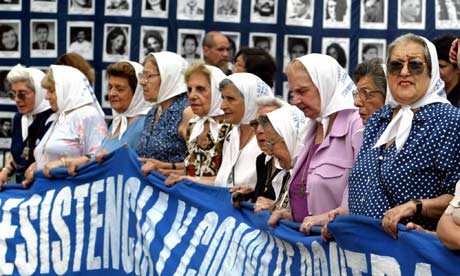 Les adoptions internationales confortent la « feel good attitude » de riches bobos au prix du déracinement de l'enfant et de la destruction de ses liens familiaux et culturels.
Les adoptions internationales confortent la « feel good attitude » de riches bobos au prix du déracinement de l'enfant et de la destruction de ses liens familiaux et culturels.Cet article de
l'Independent rappelle la triste réalité des adoptions internationales que la bien pensance ne veut pas voir.
Profit, not care: The ugly side of overseas adoptionsIn rural Nepal, where the going rate for a healthy orphan is $5,000 (£3,000), some 600 children are missing. They were taken by agents who came to the villages promising that they would educate the children and give them a better life in the capital, sometimes for a steep fee. The children never returned.
Between 2001 and 2007, hundreds of Nepali children with living parents were falsely listed as orphans and adopted by high-paying Westerners thousands of miles away. One widow, according to the child protection charity Terre des Hommes, was unable to feed her seven children and sent them to an urban "child centre", where three were quickly adopted without her consent by rich Westerners. Another, Sunita, was told by sneering authorities that she would never see her child again. She doused herself in kerosene and struck a match.
Tens of thousands of babies, toddlers and young children are now adopted across international borders every year, according to Unicef. There has been a decline since 2004, but in 2009, the last year for which reliable figures are available, the top five adopting countries alone took in 24,839 children from overseas. Half of these, some 12,753, went to the US, with Italy taking 3,964, Spain and France around 3,000 each, and Canada 2,122. Britain, where very strict rules apply, has very few overseas adoptions.
The Nepali adoption industry is part of a broader child-trafficking trend which saw some "orphans" from the rural provinces of Humla and Jumla sold to circuses. Western prospective parents, however, are the preferred revenue stream. Adoption alone brought $2m per year into the country before 2007, when the programme was suspended pending an international inquiry which uncovered many cases of child abduction and improper financial gain.
Nepal is far from the only country where international conventions on the rights of children have been breached as unscrupulous middlemen trade toddlers like livestock to desperate Western couples. The process is simple: parents in Europe and America contact an adoption agency in the country of their choice, either privately or via a home agency. Money changes hands, and their papers and the papers of the child are checked, the latter being easy to falsify. More money changes hands, and the child goes home with new parents.
Many of these adoptions are legitimate, beneficial, and bring nothing but joy to the new parents and hope to the child. But there is another side. The possibilities for corruption and back-hand profit are immense, because the emotional stakes are so high. "When people want something so very much, like a baby, the amount of money they are prepared to throw at it can be limitless," said Andy Elvin of Children and Families Across Borders. "In some countries, those amounts of money on offer mean that people do things they wouldn't otherwise do, and that's the problem."
According to Terre des Hommes, there is now, in many cases, "an industry around adoption in which profit, rather than the best interests of the child, takes centre stage". The business is a seller's market, because there are far fewer orphans in need of adoption than Western prospective parents wishing to adopt. Although many children adopted in this way do enjoy loving, stable homes with their new families, the number of truly "adoptable children" in overseas orphanages is smaller than the number of prospective parents.
Even in the aftermath of wars and natural disasters, those without a single relative to provide proper care is insufficient to meet the current demand for exotic orphans. After the tsunami in Japan, many Westerners inquired as to when and how they would be able to adopt a tsunami orphan, only to be told that any child left parentless by the flood waters would be rehoused with extended family.
There is sometimes a distinct missionary element to this charity. Christian lobby groups exhort congregations to demonstrate their faith by adopting foreign orphans from countries that know neither Jesus nor Walmart. Networks exist to help individual ministries organise funds to pay the orphanages and middlemen who supply the babies. Last year, 10 Southern Baptists "obeyed God's calling" by smuggling 33 Haitian children – most solicited from living parents – across the Dominican border to await adoption by American believers. All 10 missionaries were jailed, but Christian adoption lobbies in the United States are putting increasing political pressure on organisations such as Unicef to ratify their agenda rather than raising ethical issues about the human rights of the children involved.
There are more mundane reasons why Western couples might wish to adopt overseas rather than be matched with one of the tens of thousands of children in need of adoption at home (many of whom do not match, in age or background, the ideal child some would-be parents want). One Ukrainian tourist website boasts that "Ukraine has very few restrictions" and adding that unlike many countries, which seek to eliminate unfairness with rigorous matching systems, "prospective parents have the chance to choose the child they wish to adopt". "Ukrainian children are typically family-oriented, caring, make attachments easily," enthuses the site, as if it were selling a new breed of house pet. "They look to their new parents with adoration."
Mr Elvin, of Children and Families Across Borders, said: "There is an almost inexhaustible demand for very young children to adopt. People looking to adopt are generally looking to adopt children under the age of three, and preferably under the age of one. That's your essential problem. In America, which is the biggest importer, if you like, there are 23,000 children in the foster system waiting for adoption, but most of them will be aged five to 16. There's a very rich, powerful and well-resourced inter-country adoption lobby in the United States."
The leading supplier of babies for adoption is China, which sent 5,078 children abroad in 2009. Russia sent 4, 039, and 4,564 came from Ethiopia, one of a range of countries which, through lax regulation, had a vogue as a ready source of babies. It used to be Vietnam, then Guatemala (at one point an estimated one in every 100 babies born there was sent for adoption to the US). Ethiopia, which, until recently, was sending 50 children a day out of the country, announced a clampdown in March. No one yet knows where the agencies and desperate parents will turn next.
No matter how faithful, well-meaning or loving the prospective parents, there can be no doubt that parts of the international adoption industry can play fast and loose with the human rights of children. Those at risk are not only those who are traded, but those who remain. In some countries, international adoption is beginning to replace less profitable systems of child support.
The routine export of unwanted Korean babies to America, a 60-year tradition dating back to the Korean War, has directly prevented what a 1998 study called "alternatives for parentless or abandoned children". Most Korean "orphans" are, in fact, the children of unmarried or impoverished mothers. And while a system exists whereby those babies can simply be sent abroad, there is no reason for Korean culture to accommodate them. In other words, not only is there no global "orphan crisis", but the international adoption trade actively hinders the establishment of proper welfare provision in "sending" countries.
An international treaty designed to prevent babies from being directly traded has been only intermittently effective and, in some cases, seems to have given this well-intentioned traffic in human beings a stamp of authority. The 1993 Hague Convention on Intercountry Adoption requires its 81 signatory countries to provide regulatory bodies to oversee adoption but, despite these stipulations, abuses and child trafficking persist.
According to Unicef, "systemic weaknesses" in the Hague system facilitate "the sale and abduction of children, coercion or manipulation of birth parents, falsification of documents and bribery". A key weakness is the convention's failure to prevent signatory countries from adopting from non-signatory countries, so many adoptees to the US and Europe come from states with no obligation to oversee the process.
Even where trade is done with convention signatories, "the abuse, sale of or traffic in children" is only prevented indirectly. Although non-signatories are more poorly monitored, some of the worst reports come from countries, such as China, which have signed the convention. Nor does the treaty prevent financial gain in the transfer of children – only "improper" financial gain.
Organisations such as Unicef, the Red Cross, Terre des Hommes and Save the Children agree that adopting countries must take more responsibility to ensure that inter-country adoptions take place "with the best interests of the child as the primary consideration". The painful truth is that, as Terre des Hommes puts it, no adult or couple has "the right to a child", not even if they believe that by exercising that right they may be saving a foreign baby from poverty in "heathen" lands.
Across the world, there are thousands of parentless children needing adoption, and there is nothing remotely wrong with placing children with caring families. Unfortunately, the international adoption trade has become a murky trench of money-making and malpractice. Extant systems of oversight are rickety, but there is much that can and should be done to tighten up the provisions of The Hague convention to ensure that adoption does not become a byword for benevolent human trafficking.
 Michele Bachmann, candidate républicaine aux primaires du parti républicain : « Plus je cause plus je palpe. »
Michele Bachmann, candidate républicaine aux primaires du parti républicain : « Plus je cause plus je palpe. »
















